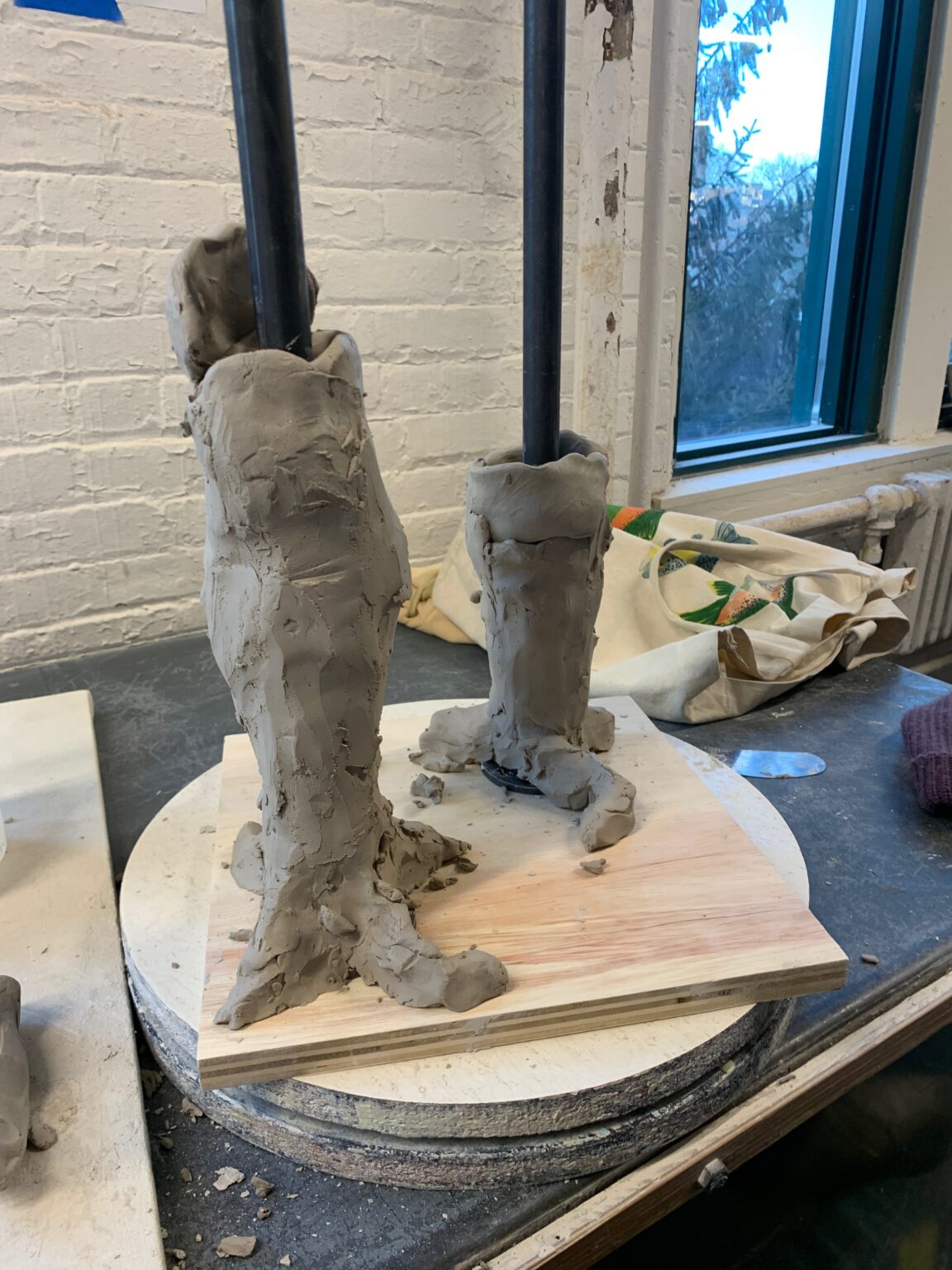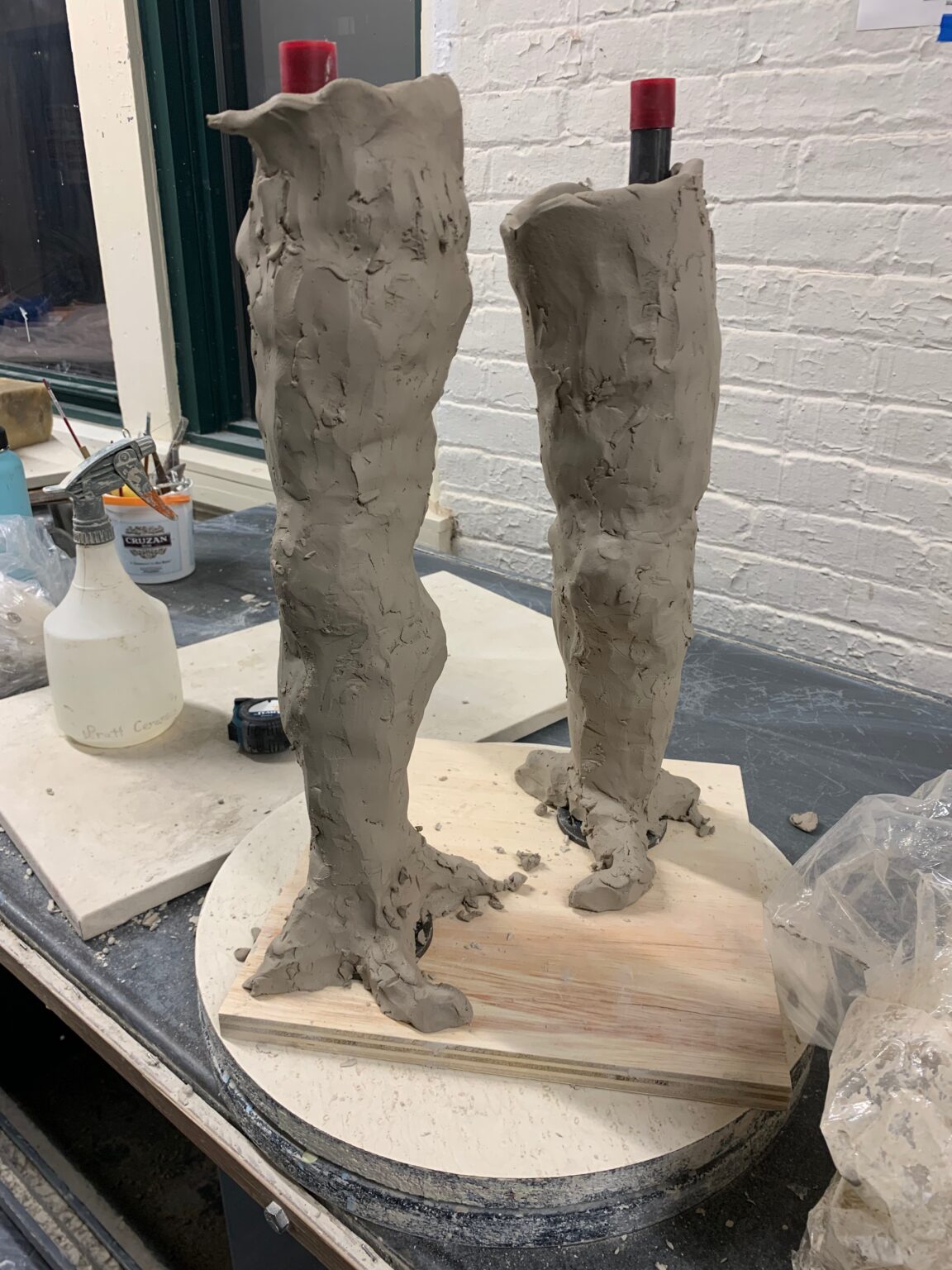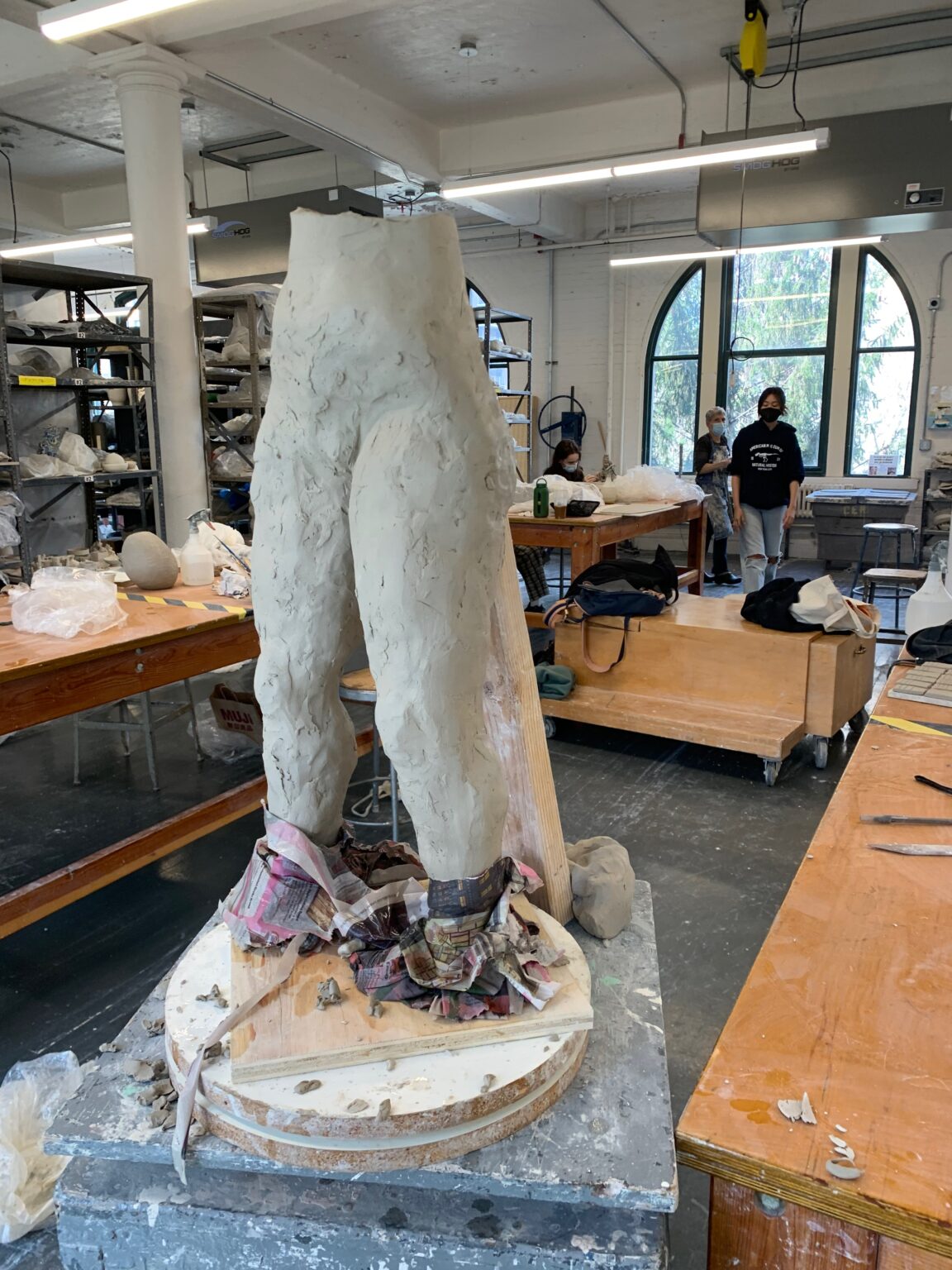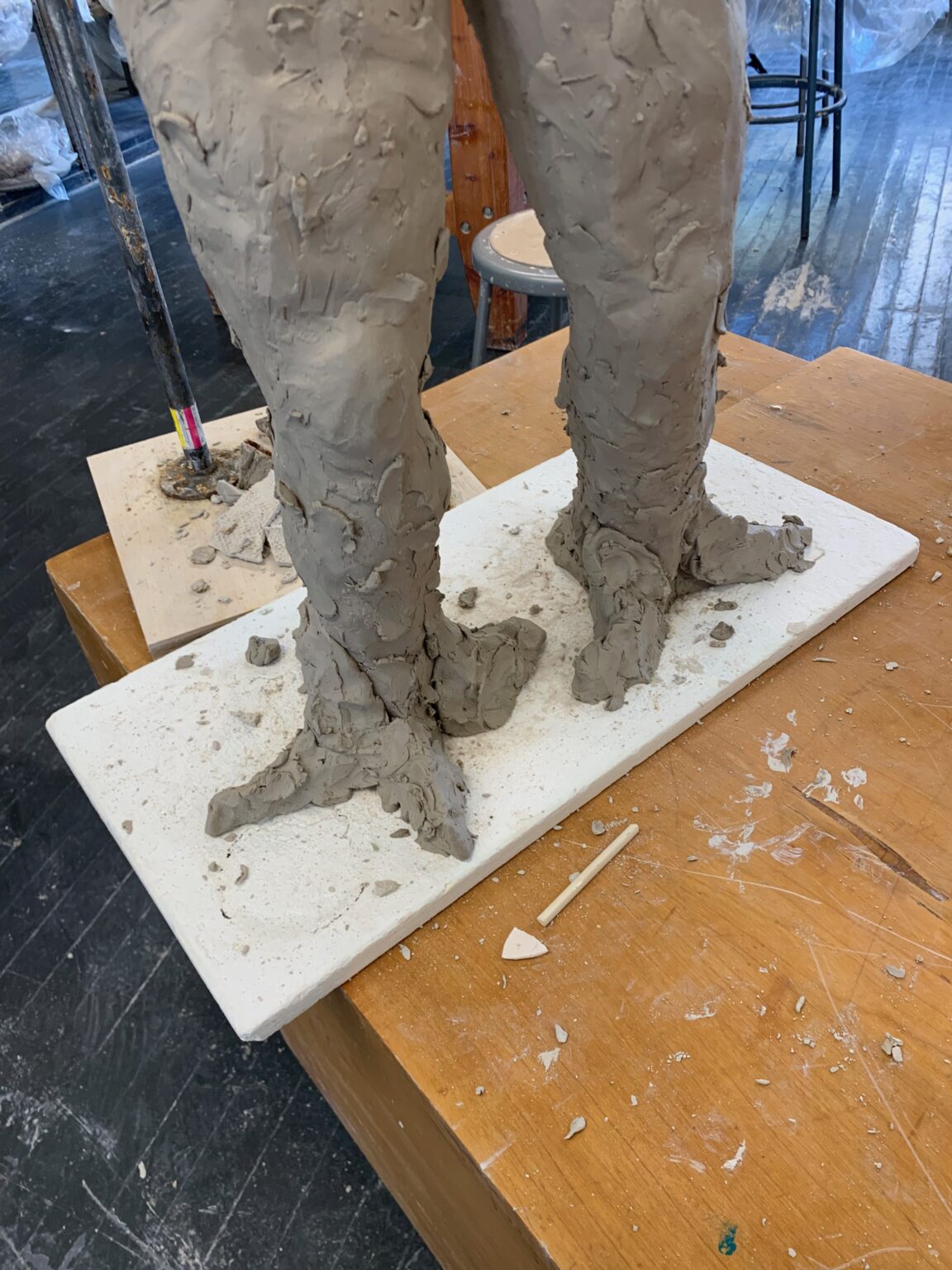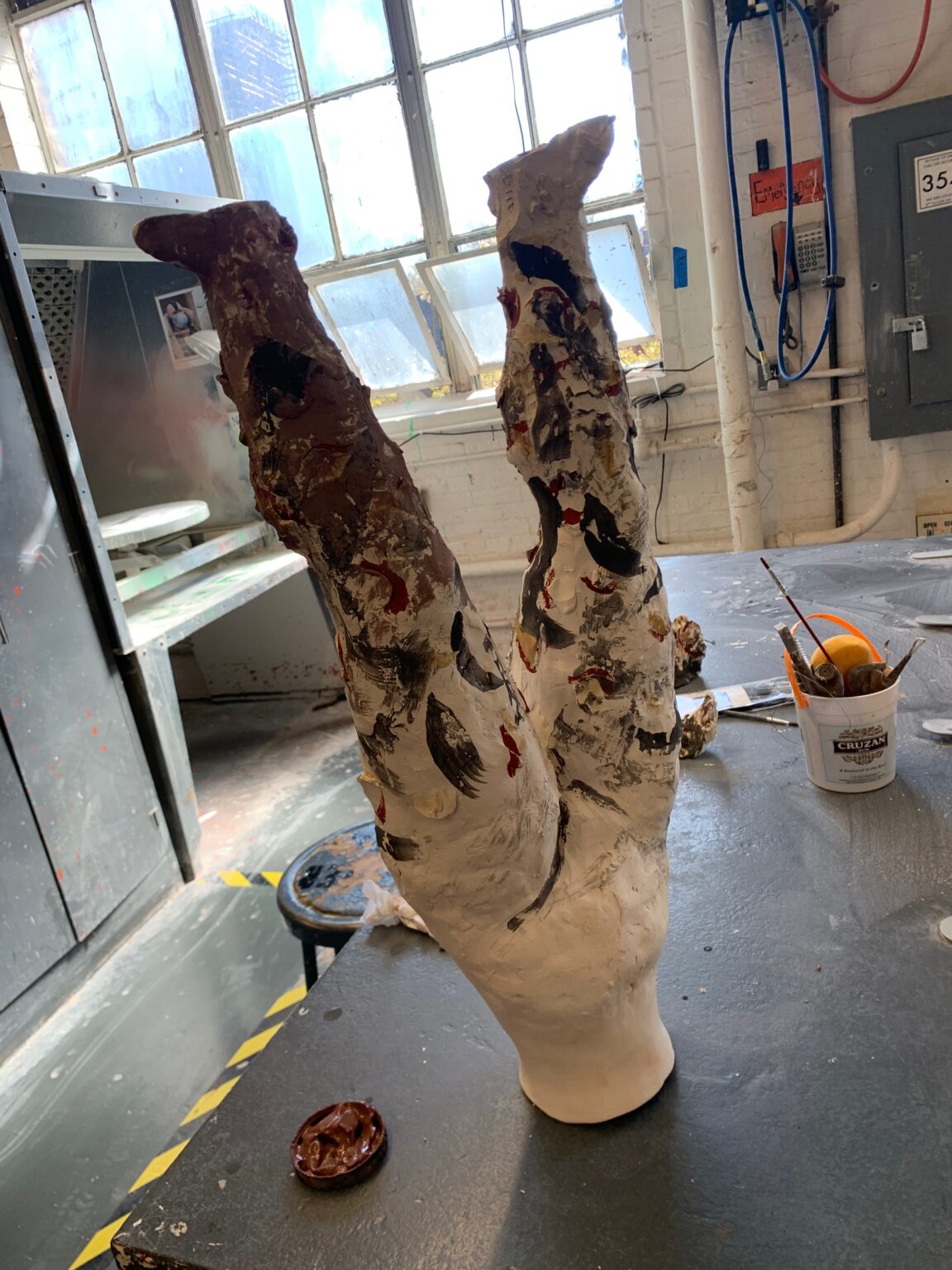“Girl look at that body!”: an Art Based self study of the representation of the female form and societal standards on femininity through clay sculpture
Katherine Bauhs
This thesis by Katherine Bauhs was conducted as a part of Pratt ADE's capstone class, Curating Learning.
Curating Learning showcases the work of ADE seniors at the culmination of the program as they curate their experiences as artists, cultural producers, and learners. The research projects and related artworks created, emphasize student interdisciplinary connections and reflections on how knowledge is constructed and facilitated through teaching, learning, and curating.
Students integrate theory and practice through reflection and research in the field of art and design education. Students develop their voices as emerging professionals as they synthesize their learning in studio, liberal arts, art and design education, and pre-service teaching as well as co-curricular experiences in both formal and informal settings. Working across media and informed by their own research they created projects that ultimately highlight their perspective on integrating their learning across the studio, classroom, and community.
Curating Learning showcases the work of ADE seniors at the culmination of the program as they curate their experiences as artists, cultural producers, and learners. The research projects and related artworks created, emphasize student interdisciplinary connections and reflections on how knowledge is constructed and facilitated through teaching, learning, and curating.
Students integrate theory and practice through reflection and research in the field of art and design education. Students develop their voices as emerging professionals as they synthesize their learning in studio, liberal arts, art and design education, and pre-service teaching as well as co-curricular experiences in both formal and informal settings. Working across media and informed by their own research they created projects that ultimately highlight their perspective on integrating their learning across the studio, classroom, and community.
Artist Statement
In this art-based self-study, I explore the representation of women in sculpture as a framework for a personal exploration of body image and the representation of femininity today. Since the beginning of time women have been viewed as a vessel for childbirth. As time passed, the obligations and standards for women have only increased. I wanted to create a form that not only addresses the societal beauty standards that have negatively affected me but also the contemporary ideology that femininity no longer belongs to those with female sex traits.
I wanted to explore this, by researching and creating my own figure of the female form using clay as a medium to support my process. Clay is a malleable material that allowed me to first create a structurally sound body through the technique of slipping and scoring. After, the clay then allows me to go back in and manipulate the fine details and texture that describes the human form. I am able to use texture to emphasize the idea of femininity no longer being associated with smooth porcelain-like skin and instead embrace the experiences that shape women due to the pressure of societal norms. I chose this medium because clay is one of the oldest materials just like how the representation of womanhood can be traced back to the beginning of civilization.
My main research question is; “How do different societal interpretations of womanhood and femininity affect art and vice versa, specifically sculpture?” Within that realm, I explored the following subquestions:
How has the depiction of womanhood in sculpture changed over time?
-How can I continue to warp and push the ideas/boundaries of what femininity is in my own practice through creating a sculpture inspired by the ‘female’ form?
I have created a woman in response to the societal beauty standards of today. I used the figure as a way to look back and process my own issues growing up and feeling (un)comfortable in my body and recognizing the societal pressures I was put under. This is something I have done in my practice before but focused more on my own past mental history rather than the history of my body. When creating this work a lot of past memories and issues I have with my own body today became present. While I was sculpting my figure I found myself using my own body as a tool of reference. Artists, specifically female artists, can embrace their bodies by using themselves as a model for their work, therefore rejecting conventional patriarchal beauty standards. When I started to think more in-depth about societal beauty standards I realized that growing up I was acting to gain approval from others rather than myself because of the pressure of these external and unconscious beauty standards I internalized from society. When I arrived at the sculpting of the vulva I wanted to opt-out of drawing attention to it because it is not the only thing that makes a woman feminine, nor are breasts. I decided against creating a bust for my figure, instead, I turned the top half of her body into a vessel to address the idea that a person can still be feminine without having to have a main physical character trait of a female. The physical qualities of a vessel thrown on the wheel focus on the surface and the execution of the form itself. I wanted to emphasize this through the bust of my figure but also to contradict this with the texture of the legs. Clay is historically a common material for male sculptors who created idealized sculptures of female bodies and for female artists to use the same materials as clay to create their own bodies grants women autonomy over their bodies and how they want to show themselves to the world. The idea that femininity no longer has to be subject to societal norms but that it can be renvisioned to be a combination of whatever I choose. Through the process of creating my own figure, I was able to understand and recognize that past experiences I had were due to the pressures of societal beauty standards, that these are cultural constructs, and that it is up to me to determine how to represent my body and femininity beyond my biological sexual organs.
